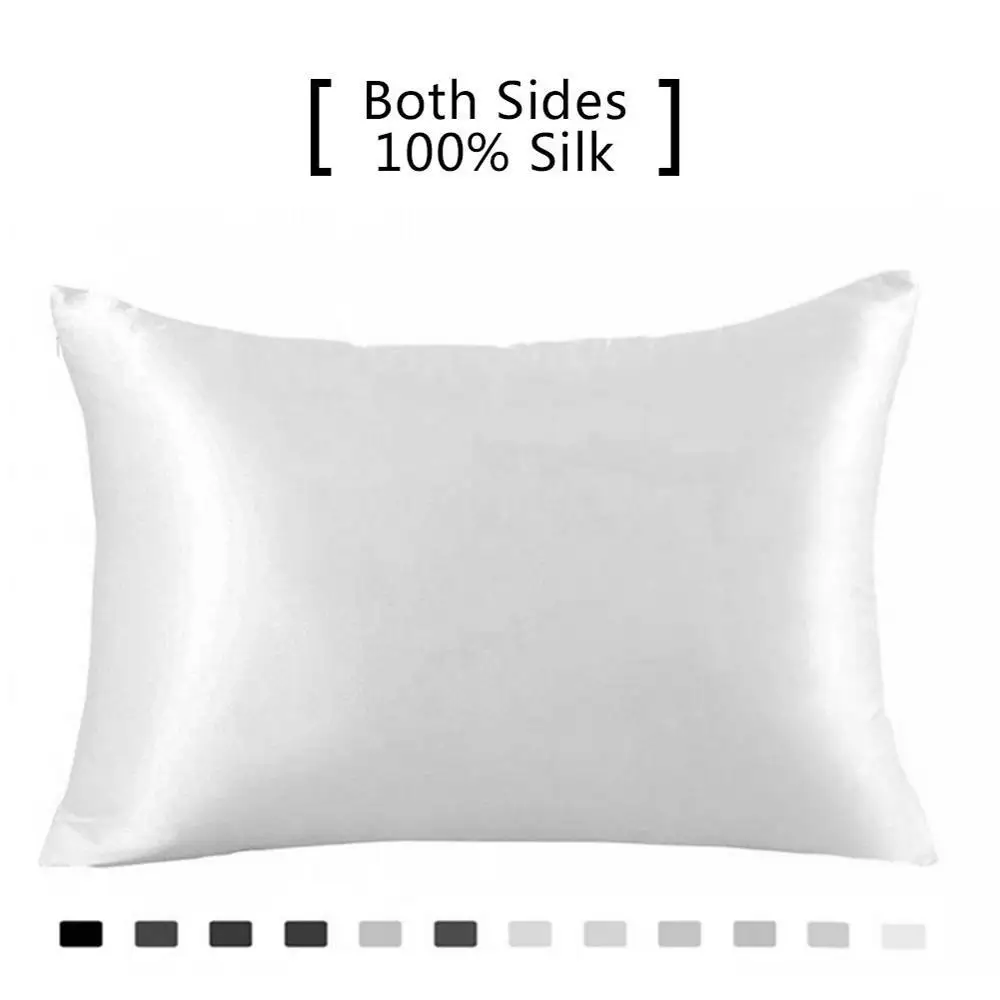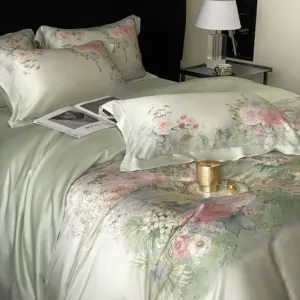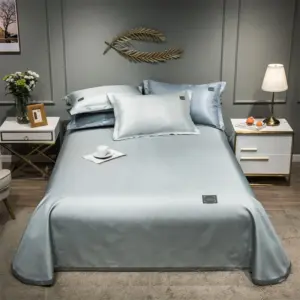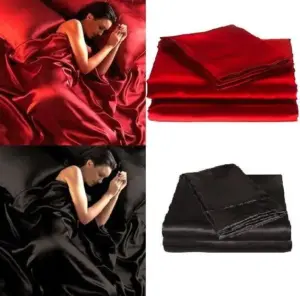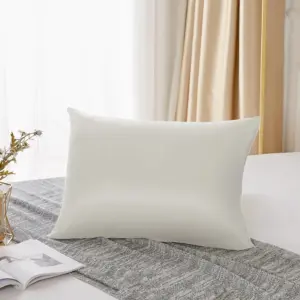Introduction
In recent years, silk pillowcases have surged in popularity among those seeking better hair care solutions. No longer just a luxury item, these smooth sleep surfaces have become a staple in beauty routines worldwide. But beyond the hype and elegant appearance, silk pillowcases genuinely deliver remarkable benefits for hair health.
The answer to whether silk pillowcases are good for your hair is a resounding yes. These luxurious accessories offer multiple advantages: they significantly reduce friction against hair strands, help retain your hair’s natural moisture, and effectively control frizz. These benefits aren’t just marketing claims – they’re rooted in the unique physical properties of silk fibers and supported by dermatologists and professional hairstylists alike.
Throughout this article, we’ll explore exactly how silk pillowcases benefit hair health and why investing in high-quality silk pillowcases might be one of the best decisions you make for your hair care routine.
The Science Behind Silk’s Hair Benefits
Understanding why silk works so well for hair requires looking at its fundamental structure and properties. Unlike many fabrics, silk isn’t just different in feel – it’s structurally unique in ways that directly benefit your hair.
Natural Protein Structure
Silk is composed primarily of two proteins: sericin and fibroin. These natural proteins share a similar amino acid composition to the keratin in human hair. This protein-based structure gives silk its signature properties and explains why it interacts so favorably with hair strands.
Smooth Surface at the Microscopic Level
When examined under magnification, silk fibers reveal an incredibly smooth surface compared to cotton fibers, which appear rough and irregular. This microscopic smoothness is why silk pillowcases reduce hair breakage so effectively – there simply aren’t the tiny catches and snags that damage hair cuticles during sleep.
Low Absorption Properties
Unlike cotton, which absorbs moisture readily, silk has low porosity. This means it doesn’t pull moisture from your hair while you sleep. This non-absorbent quality helps your hair maintain its natural oils and hydration overnight.
Natural Temperature Regulation
Silk naturally regulates temperature, creating a consistent environment for both your hair and scalp. This temperature regulation helps prevent excess sweating that can affect scalp health and, by extension, hair health.
These fundamental properties explain why silk isn’t just good for sensitive skin but also provides multiple benefits for hair that other materials simply cannot match.
Key Benefits of Silk Pillowcases for Hair
Reduced Friction and Hair Breakage
The primary advantage silk offers for hair health is dramatically reduced friction. When you sleep on traditional cotton pillowcases, your hair experiences significant resistance as you move throughout the night. This friction:
- Roughens the hair cuticle, causing immediate damage
- Creates microscopic tears in hair strands
- Leads to split ends and breakage over time
- Weakens hair structure, particularly at the crown and sides
The friction coefficient of silk is significantly lower than cotton – in fact, it’s among the lowest of any natural fiber. This means hair glides across the surface instead of catching and pulling. For a direct comparison, imagine the difference between running your hand across sandpaper versus glass – this dramatic difference in friction is what makes silk pillowcases superior to cotton ones for maintaining hair integrity.
Over time, this reduction in nightly friction translates to stronger, healthier hair with noticeably fewer split ends and less breakage.
Enhanced Moisture Retention and Hydration
One of silk’s most valuable properties for hair care is its ability to preserve moisture. Unlike cotton, which can absorb up to 27% of its weight in moisture, silk maintains a much lower absorption rate. This difference means:
- Your hair’s natural oils remain where they belong – in your hair
- Applied overnight treatments and conditioners stay in your hair rather than transferring to your pillowcase
- Hair cuticles stay hydrated rather than drying out overnight
This moisture retention benefit is particularly significant for those with naturally dry hair, color-treated hair, or hair that undergoes regular heat styling. The Mulberry silk pillowcases are especially effective at preserving this vital moisture balance due to their high-quality fibers and tight weave.
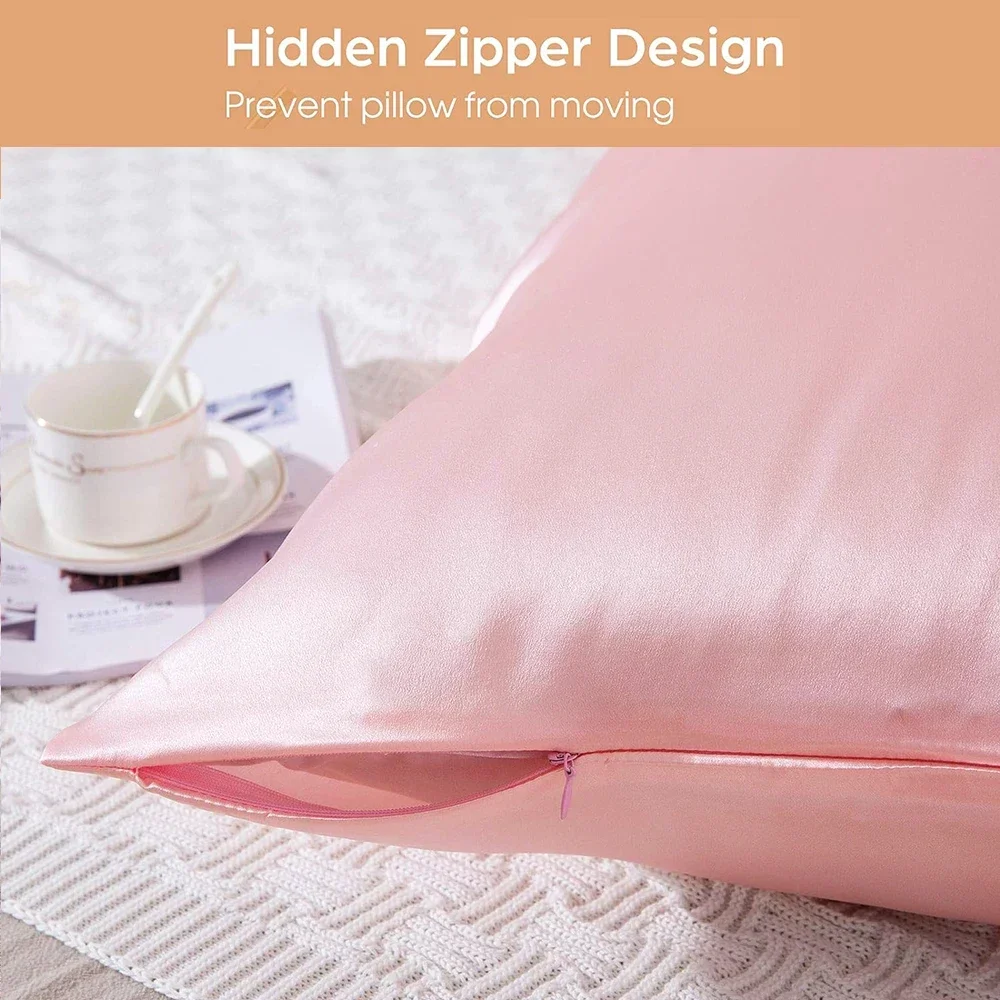
Frizz Reduction and Smoother Hair
Frizz occurs when the hair cuticle is raised and roughened, allowing moisture to enter and exit the hair shaft unpredictably. Silk pillowcases combat frizz through two mechanisms:
- The smooth surface prevents the friction that causes cuticle damage in the first place
- By maintaining consistent moisture levels, hair doesn’t experience the hydration fluctuations that contribute to frizz
For those with naturally textured hair, the benefits are particularly noticeable. Silk pillowcases help curly hair maintain definition overnight without flattening or disrupting natural curl patterns. Many users report waking up with significantly smoother hair that requires minimal styling – a stark contrast to the “bedhead” often experienced with cotton pillowcases.
Preserving Hairstyles and Blowouts
Anyone who’s invested time and money into a professional blowout knows the disappointment of waking up with their style compromised after just one night’s sleep. Silk pillowcases help extend the life of:
- Professional blowouts and straightening treatments
- Curled or waved styles
- Natural curl definition
- Braided and protective styles
The benefits of silk for hair during sleep include maintaining style integrity by reducing the flattening and distortion that occurs with higher-friction fabrics. Many users report their styles lasting 2-3 days longer when sleeping on silk versus cotton pillowcases – a significant time and cost saving.
Cleaner Hair and Reduced Washing Frequency
Cotton pillowcases not only absorb moisture from your hair but also tend to collect styling products, natural oils, and environmental pollutants. This accumulation can transfer back onto your hair and scalp during sleep, creating a cycle that often necessitates more frequent washing.
Silk’s smooth surface resists this product buildup, allowing:
- Extended time between washes
- Less exposure to potentially harsh cleansers
- Better preservation of hair color and treatments
- Healthier scalp environment
This reduction in washing frequency particularly benefits those with color-treated hair or dry hair types, as excessive washing often strips protective oils and color molecules. Our standard size silk pillowcases provide this cleanliness benefit while fitting comfortably on most standard pillows.
Benefits for Different Hair Types and Concerns
Silk pillowcases offer universal benefits, but certain hair types see particularly dramatic improvements:
Fine/Thin Hair:
* Experiences less breakage and thinning
* Maintains volume rather than being flattened overnight
* Shows reduced signs of damage over time
Curly/Coily Hair:
* Preserves curl definition and pattern
* Reduces single-strand knots and tangling
* Maintains moisture balance essential for curl structure
Chemically Processed Hair:
* Protects fragile, processed strands from mechanical damage
* Extends color vibrancy by reducing friction-based fading
* Minimizes breakage at points weakened by chemical services
Aging Hair:
* Protects increasingly fragile strands from breakage
* Helps maintain natural shine that often diminishes with age
* Reduces tangles that can lead to hair loss during brushing
Thinning Hair:
* Minimizes breakage that can make thinning more apparent
* Reduces friction against the scalp that can irritate follicles
* Preserves existing hair length and strength
Understanding your hair’s specific needs helps when choosing silk pillowcases by momme weight – those with fine or damaged hair often benefit from higher momme counts for maximum protection.
Silk vs. Other Pillowcase Materials for Hair
Silk vs. Cotton Pillowcases
When comparing these two common pillowcase materials, the differences in how they affect hair health are substantial:
| Feature | Silk | Cotton |
|---|---|---|
| Surface Texture | Extremely smooth, minimal friction | Rougher with visible fibers that catch hair |
| Moisture Absorption | Low absorption preserves hair’s moisture | High absorption draws moisture from hair |
| Temperature Regulation | Naturally thermoregulating | Retains heat and moisture |
| Durability With Proper Care | Highly durable, lasting years | Breaks down faster with regular washing |
| Effect on Hair Cuticle | Maintains smooth cuticle surface | Roughens cuticle over time |
Beyond these technical differences, the practical effect is clear: hair glides across silk without catching or pulling, while cotton creates resistance that damages hair over time. The silk cotton pillowcase comparison shows that while cotton may be more affordable initially, silk provides significantly better protection for hair integrity.
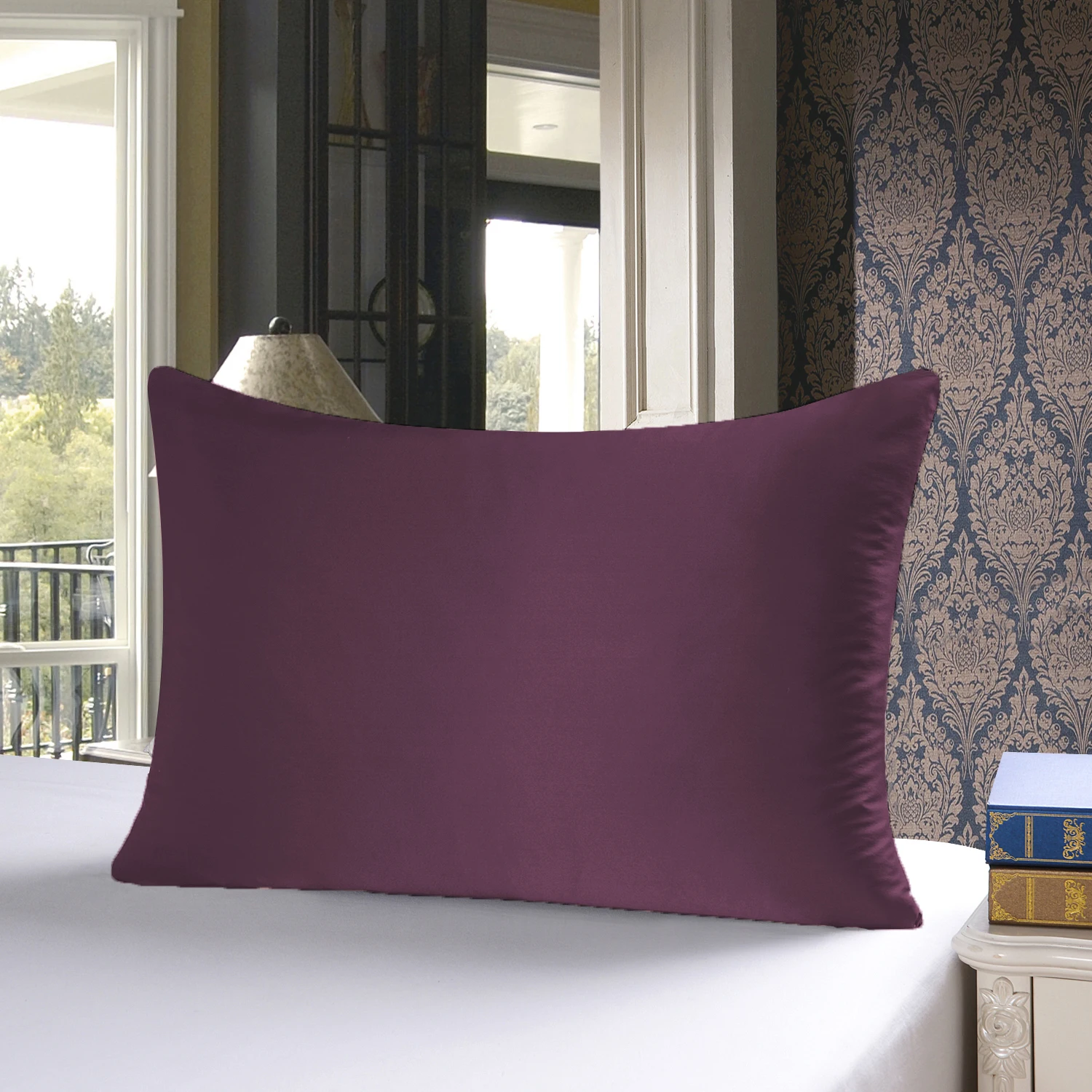
Silk vs. Satin Pillowcases
A common source of confusion in the beauty world is the difference between silk and satin:
Silk is a natural protein fiber produced by silkworms, while satin refers to a type of weave rather than the material itself. Satin pillowcases can be made from various fibers including polyester, nylon, rayon, or even silk itself.
While both silk and synthetic satin pillowcases reduce friction compared to cotton, they differ in crucial ways:
- Silk naturally regulates temperature; synthetic satin can trap heat
- Silk is breathable and appropriate for all skin types; synthetic satin may cause sweating
- Silk contains natural proteins beneficial to hair; synthetic materials do not
- Silk is biodegradable; most synthetic satins are not
When selecting pillowcase materials for healthy hair, true silk offers comprehensive benefits that synthetic alternatives attempt to mimic but can’t fully replicate.
Silk vs. Silk-Alternative and Vegan Options
For those seeking the benefits of silk without using animal products, several alternatives exist:
- Bamboo silk: Derived from bamboo fibers, offering smoothness with excellent sustainability
- Lyocell/Tencel: Wood pulp-based fabrics with similar smoothness to silk
- Plant-based silks: Innovative options made from sources like orange peels or rose fibers
These alternatives generally provide better hair protection than cotton, though they may not match all the benefits of true silk. The question of whether vegan silk is as good as real silk depends on your specific priorities – ethical considerations may outweigh slight differences in performance.
For those seeking animal-free options, Sanctuary Soft offers vegan silk bedding that maintains many of the hair benefits while aligning with plant-based values.
What Experts Say About Silk Pillowcases for Hair
Hair care professionals and dermatologists frequently recommend silk pillowcases as part of a comprehensive hair health regimen. Their expert insights include:
Dermatologists point to silk’s ability to reduce friction-based damage and preserve the hair cuticle’s integrity. Many recommend silk pillowcases particularly for patients experiencing increased hair fragility, breakage, or thinning.
Hairstylists often suggest silk pillowcases to clients seeking to extend the life of professional treatments and styles. Many note that clients who switch to silk pillowcases require less frequent damage repair treatments and experience better style longevity.
Trichologists (specialists in scalp and hair health) highlight silk’s benefits for maintaining proper moisture balance and reducing mechanical stress on hair strands. They often note improvements in clients with excessive breakage after adopting silk pillowcases.
These professional endorsements reinforce what scientific understanding of silk’s properties suggests – that silk pillowcases improve hair health through multiple mechanisms rather than through a single benefit.
Potential Limitations of Silk Pillowcases for Hair
While the benefits of silk pillowcases are substantial, it’s important to maintain realistic expectations:
- Higher Initial Investment: Quality silk pillowcases typically cost $50-150, significantly more than standard cotton options
- Special Care Requirements: Silk requires gentler washing and handling than cotton to maintain its benefits
- Not a Complete Solution: Silk pillowcases complement but don’t replace proper hair care routines
- Adjustment Period: Some users need time to adapt to the different feel and slipperiness of silk
Additionally, while silk pillowcases help hair in multiple ways, they can’t reverse existing damage or address underlying health issues affecting hair. They work best as part of a comprehensive approach to hair care rather than as a standalone solution.
Choosing the Right Silk Pillowcase for Your Hair
To maximize the hair benefits of a silk pillowcase, several factors deserve careful consideration:
Momme Count: This measures silk fabric weight and density – similar to thread count for cotton. For optimal hair benefits:
* 19-22 momme: Good balance of durability and softness
* 22-25 momme: Premium quality offering maximum hair protection
* Below 19 momme: May be too lightweight for significant hair benefits
* Above 25 momme: Extremely durable but potentially less softness
Silk Quality: 100% Mulberry silk is the highest standard, coming from silkworms fed exclusively on mulberry leaves. This silk has longer, more uniform fibers that create the smoothest surface for hair.
Weave Type: Charmeuse weave provides the smoothest surface for hair, while other weaves may introduce more texture.
Certifications: Look for OEKO-TEX Standard 100 certification ensuring the silk is free from harmful substances that could transfer to hair and skin.
Closure Style: Hidden zippers or envelope closures keep pillows secure without creating pressure points that could damage hair.
Our queen size silk pillowcases feature optimal specifications for hair protection while fitting standard queen pillows perfectly.
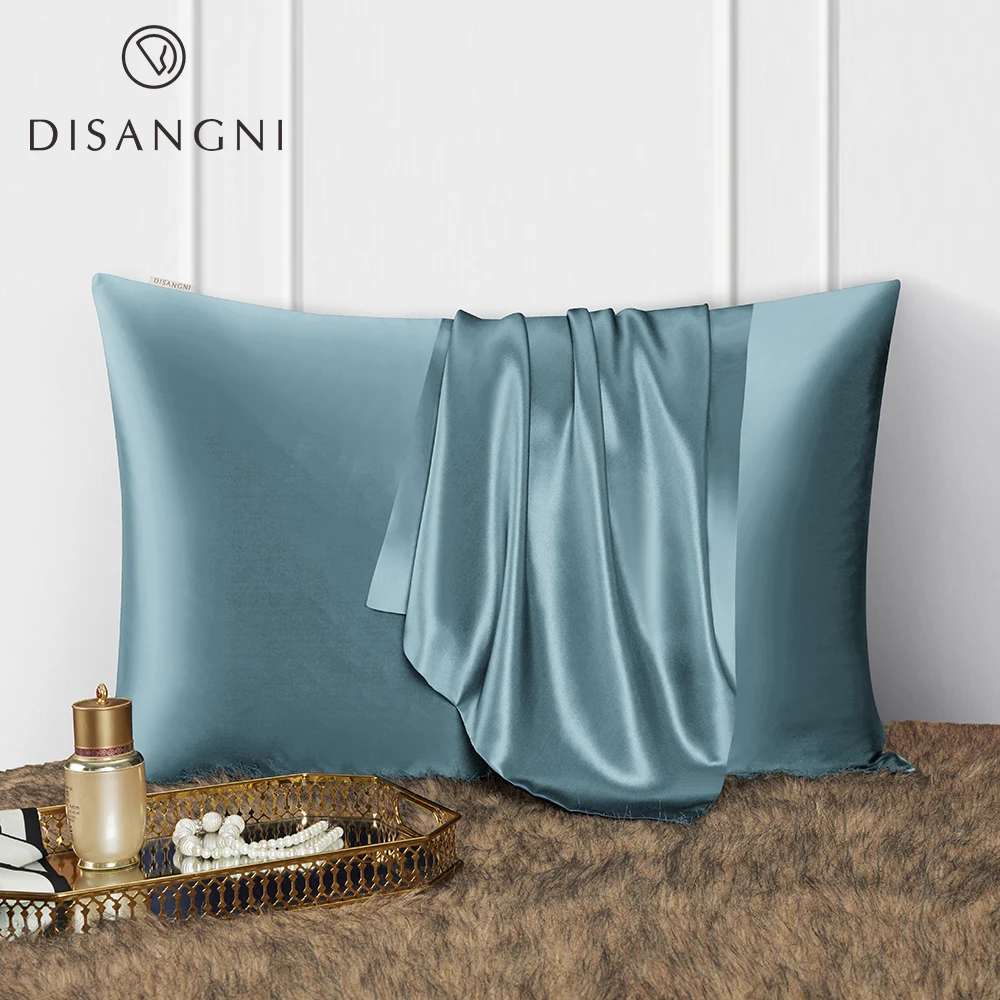
Caring for Your Silk Pillowcase to Maintain Hair Benefits
To ensure your silk pillowcase continues providing optimal hair benefits, follow these care guidelines:
Washing Instructions:
* Hand wash using lukewarm water and mild detergent free of enzymes and bleach
* If machine washing, use a mesh laundry bag on the delicate cycle with cold water
* Limit washing to every 7-14 days unless visibly soiled
* Avoid fabric softeners which can coat silk fibers
Drying Techniques:
* Never wring silk – press between towels to remove excess water
* Air dry away from direct sunlight and heat sources
* Hang or lay flat to prevent wrinkles
Storage Recommendations:
* Store clean, dry silk pillowcases folded in a cool, dry place
* Avoid plastic bags which can trap moisture
* Keep away from direct sunlight which can fade colors
Handling Issues:
* Remove wrinkles with a cool iron on the silk setting
* Treat stains immediately with diluted mild detergent
* Rotate pillowcases regularly to ensure even wear
With proper care, a quality silk pillowcase can maintain its hair benefits for 1-2 years of regular use. Understanding true silk sheet quality helps you recognize when replacement might be necessary to maintain optimal hair benefits.
Eucalyptus Silk Bedding Sets, Eucalyptus Silk Sheets
Price range: $360.24 through $393.60 Select options This product has multiple variants. The options may be chosen on the product page- Price range: $267.82 through $306.55 Select options This product has multiple variants. The options may be chosen on the product page
Bamboo Silk Sheets, Cooling Silk Sheets
Price range: $130.76 through $177.80 Select options This product has multiple variants. The options may be chosen on the product pageBamboo Silk Sheets, Queen Size Silk Fitted Sheet
Price range: $230.24 through $297.88 Select options This product has multiple variants. The options may be chosen on the product pageKing Size Silk Pillowcases, Mulberry Silk Pillowcases, Queen Size Silk Pillowcases
Price range: $94.96 through $121.56 Select options This product has multiple variants. The options may be chosen on the product page- 100% Bamboo Fiber Parrot Duvet Cover Set – Queen King Twin Size Tropical Bedding for Comfort & StylePrice range: $241.95 through $380.95 Select options This product has multiple variants. The options may be chosen on the product page
Maximizing Silk Pillowcase Benefits with Complementary Hair Care
To enhance the hair benefits your silk pillowcase provides, consider these complementary practices:
Pre-Sleep Hair Preparation:
* Gently detangle hair with a wide-tooth comb before bed
* Apply leave-in conditioner lightly to ends if hair is particularly dry
* Use a loose, high ponytail with a silk scrunchie for very long hair
* Consider a loose braid for wavy or curly hair to maintain definition
Position and Styling:
* Spread hair above your head on the pillowcase rather than sleeping directly on it
* For very curly or textured hair, consider the “pineapple” method (loose top knot)
* Use minimal styling products that could transfer to your pillowcase
Combining these practices with your silk pillowcase creates an optimal environment for healthier hair while using silk pillowcases and maximizes protection during sleep.
Frequently Asked Questions About Silk Pillowcases for Hair
How soon will I notice hair benefits from a silk pillowcase?
Most people notice reduced frizz and tangling within the first week. More substantial benefits like reduced breakage and extended style longevity typically become apparent within 2-4 weeks of consistent use.
Do I still need hair products if I use a silk pillowcase?
Yes. While silk pillowcases help maintain hair health, they complement rather than replace quality hair care products. Many users find they need fewer styling products and heat-styling sessions, but basic care products remain important.
Can silk pillowcases help with hair growth?
Silk pillowcases don’t directly stimulate hair growth, but by reducing breakage and damage, they help you retain length that might otherwise be lost. This can make growth progress more noticeable over time.
Are silk pillowcases worth the price for hair benefits?
For most people concerned with hair health, yes. When calculating cost-per-use over their lifespan, quality silk pillowcases often cost just cents per night while providing significant hair protection benefits.
How often should I replace my silk pillowcase?
With proper care, a high-quality silk pillowcase should maintain its hair benefits for 1-2 years of regular use. Signs it’s time to replace include visible thinning of the fabric or reduced smoothness of the surface.
Can silk pillowcases help with scalp conditions?
Many users with sensitive scalps report improvements when switching to silk. The breathable, natural material creates less friction against the scalp and doesn’t absorb topical treatments as readily as cotton. Our king size silk pillowcases provide ample surface area for those who move frequently during sleep.
Final Thoughts: Is a Silk Pillowcase Really Worth It for Your Hair?
After examining the evidence and expert opinions, the conclusion is clear: silk pillowcases offer substantial, measurable benefits for hair health. The unique properties of silk – minimal friction, moisture retention, and temperature regulation – create an ideal environment for hair during the many hours we spend sleeping.
While silk pillowcases represent a higher initial investment than standard cotton options, their longevity and the reduced need for damage-repair hair treatments often make them more economical over time. The nightly protection they provide accumulates, resulting in healthier hair that requires less intervention and styling.
For most people concerned with maintaining hair health and appearance, a quality silk pillowcase is a worthwhile addition to their hair care routine. Consider your specific hair concerns and needs when selecting the right silk pillowcase – the result will be waking up with healthier, more manageable hair day after day.

